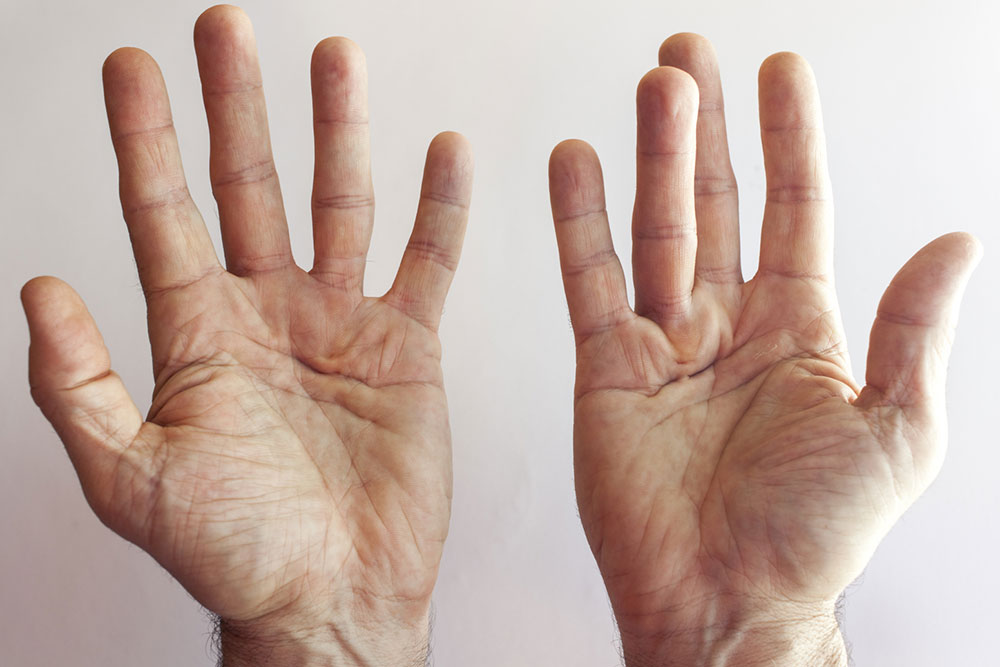Dupuytren’s Contracture – Its Symptoms and Causes
Dupuytren’s contracture, a deformity, is triggered in the hand. It develops when a layer of tissue beneath the skin in the palm forms knots. These knots then go on to create a thick cord that pulls one or more fingers, causing them to bend. Unfortunately, this condition can make everyday tasks difficult like shaking hands, using gloves, and holding objects.
Symptoms of Dupuytren’s contracture
Typically, the two fingers that are farthest from the thumb are affected by Dupuytren’s contracture.

- Thickening of the skin that covers the palm of the hand. Overtime or with further development of the condition, the skin on the palm may appear dimpled.
- There may be a lump formation in the palm. The lump tissue feels thicked against the skin and there may also be sensitivity when touched. However, one may feel no pain.
- Over the advanced stages, the cord knots in the fingers begin to pull much tighter. The fingers are pulled closer towards the palm, causing them to bend further. As a result, one may have difficulty using their hands for basic functions.
- In rare cases, Dupuytren’s contracture can affect even the index and middle finger. Sometimes, the thumb too be may be affected. The condition may also occur in both hands; however, one hand usually suffers a more severe impact.
- The symptoms of Dupuytren’s contracture can range anywhere between mild to severe, depending on the progression of the condition.
Despite intense medical research, professionals are unable to point out the main cause of Dupuytren’s contracture. Currently, there is no evidence that points out specific factors that lead to its development. However, there are some factors that are believed to increase the risks of developing the condition with time.
- The condition is commonly noted to occur among people who are above the age of 50. There are multiple studies that have linked aging with the development of Dupuytren’s contracture.
- Smoking tobacco too is suspected to have an impact on the development of Dupuytren’s contracture. This is attributed to the microscopic changes that the blood vessels undergo as a result of smoking. There are also some studies that suggest the association of alcohol consumption.
- Although there is no specific reason, people with diabetes reportedly have an increased risk of developing Dupuytren’s contracture.
- Family history too can play a role in the increasing risks of having Dupuytren’s contracture. People with close blood relations who have been affected by the disease are at a higher risk of developing this condition.
- Men, as compared to women, are more likely to develop Dupuytren’s contracture.
Undoubtedly, Dupuytren’s contracture can cause inconvenience when performing different activities. In most cases, the patient does not require treatment as it can be managed with a little effort.